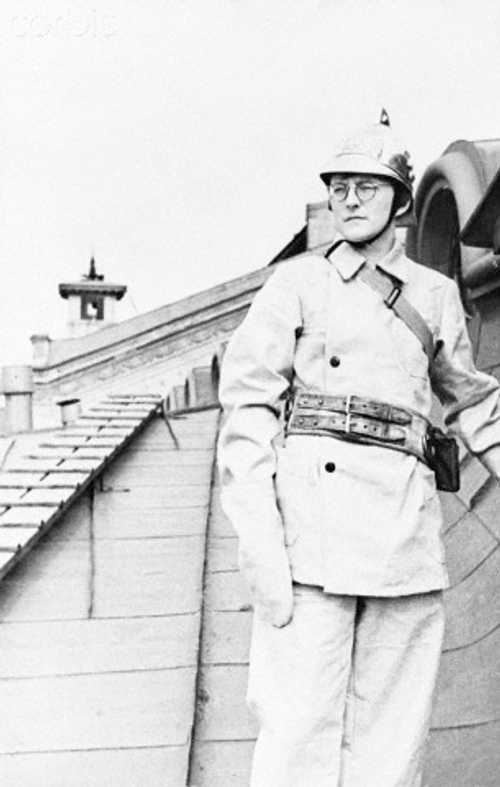
Homefront
Auxiliary firefighter, Leningrad, 1941.
Government of the Russian Federation/Corbis
Russian composer and pianist Dmitry Shostakovich in the uniform of Leningrad Conservatory's auxiliary firefighter unit, October, 1941. When Germany invaded, he had attempted to join the Red Army, but was refused because of his poor eyesight. He uniformed up for the auxiliary fire service instead. This photo would have been made for laudatory news/propaganda publication. Although he became something of an "establishment" figure in the Soviet Union later in life, his relationship with the Stalinist regime was rather bumpy over time. especially in the early years. This resulted from the nature of his "public" music; his early symphonic word was heavily criticized for not conforming with the criteria of "Socialist Realism" (whatever that may have meant for music). He had been officially denounced in 1936; his subsequent 5th Symphony was billed as a response to his critics. Its more traditional character found favour with the authorities and was widely praised; Dmitry was thus "rehabilitated". The truth is that his subsequent symphonic compositions had a deeply ambiguous streak, doing enough to conform with official norms while having another life, so to speak, underneath. This applies not least to his most famous work, the 7th Symphony, "Leningrad". Shostakovich composed the first three movements in Leningrad, the fourth following his family's evacuation. The 7th was hailed publicly as a monument to the heroic defenders of Leningrad when first performed while the city was still under siege. It certainly lends itself to that interpretation. Best regards, JR.
2279 Views
5/21/2015
